|
|
Box-elder |
(Acer negundo) |
native |
|
Tree-of-heaven |
(Ailanthus altissima) |
introduced |
|
Catalpa |
(Catalpa sp.) |
introduced |
|
Ash |
(Fraxinus sp.) |
native |
|
White Mulberry |
(Morus alba) |
introduced and invasive |
|
Red Mulberry |
(Morus rubra) |
native |
|
Large-toothed aspen |
(Populus grandidentata) |
native |
|
Quaking aspen |
(Populus tremuloides) |
native |
|
Balm-of-Gilead |
(Populus balsamifera) |
introduced |
|
Sycamore |
(Platanus occidentalis) |
native |
|
Staghorn Sumac |
(Rhus typhina) |
native |
|
Black Locust |
(Robinia pseudoacacia) |
native |
|
Elms |
(Ulmus sp.) |
native |
Shrubs
|
Butterfly Bush |
(Buddleja) |
introduced |
|
Forsythia |
introduced |
|
|
Wild Hydrangea |
(Hydrangea arborescens) |
native |
|
Privet |
(Ligustrum vulgare) |
invasive |
|
Honeysuckle family |
(Lonicera sp.) |
mostly introduced |
|
European Buckthorn |
(Rhamnus cathartica) |
introduced. |
|
Bristly Locust |
(Robinia hispida) |
introduced |
Annuals and Perennials
|
Boneset |
(Eupatorium sp.) |
native |
|
Foxtail Barley |
(Hordeum jubatum) |
|
|
Butter-and-Eggs |
(Linaria vulgaris) |
introduced |
|
Sweet Clover |
(Melilotus sp.) |
introduced |
|
Japanese Knotweed |
(Polygonum cuspidatum) |
invasive |
|
Bouncing Bet |
(Saponaria officinalis) |
introduced |
|
Goldenrod |
(Solidago sp.) |
native |
|
Poison Ivy |
(Toxicodendron radicans) |
native |
|
Common Mullein |
(Verbascum thapsus) |
introduced |
Vines
|
Japanese Honeysuckle |
(Lonicera japonica) |
invasive |
|
Virginia Creeper |
(Parthenocissus quinquefolia) |
native |
|
Multiflora Rose |
(Rosa multiflora) |
invasive |
|
Blackberry |
(Rubus allegheniensis) |
native |
|
Raspberry |
(Rubus occidentalis) |
native |
|
Grapes |
(Vitis sp.) |
some native but invasive |
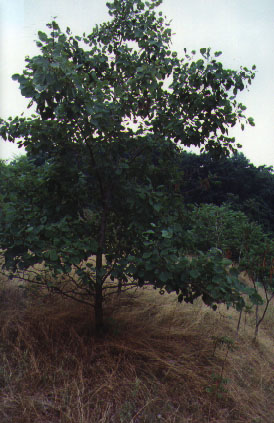
There are many aspens (Populus sp.) on the slag heaps.
Photo by Bob Bingham
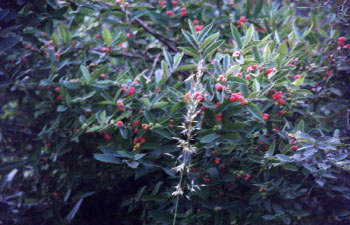
Species of introduced honeysuckle (Lonicera spp.) are common at Nine Mile Run.
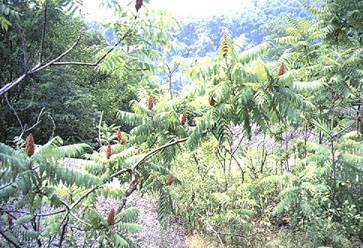
Staghorn sumac (Rhus typhina) typically grows along roads and in orld fields, habitats similar to the slag at Nine Mile Run.
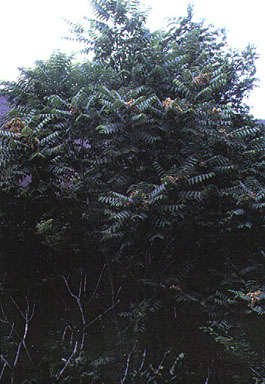
The tree-of-heaven (Ailanthus altissima) is a common weedy tree in urban areas.
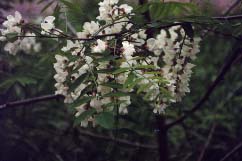
Black locust (Robinia pseudoacacia) commonly grows on slopes along Pennsylvania roads and in similar habitats at Nine Mile Run.
